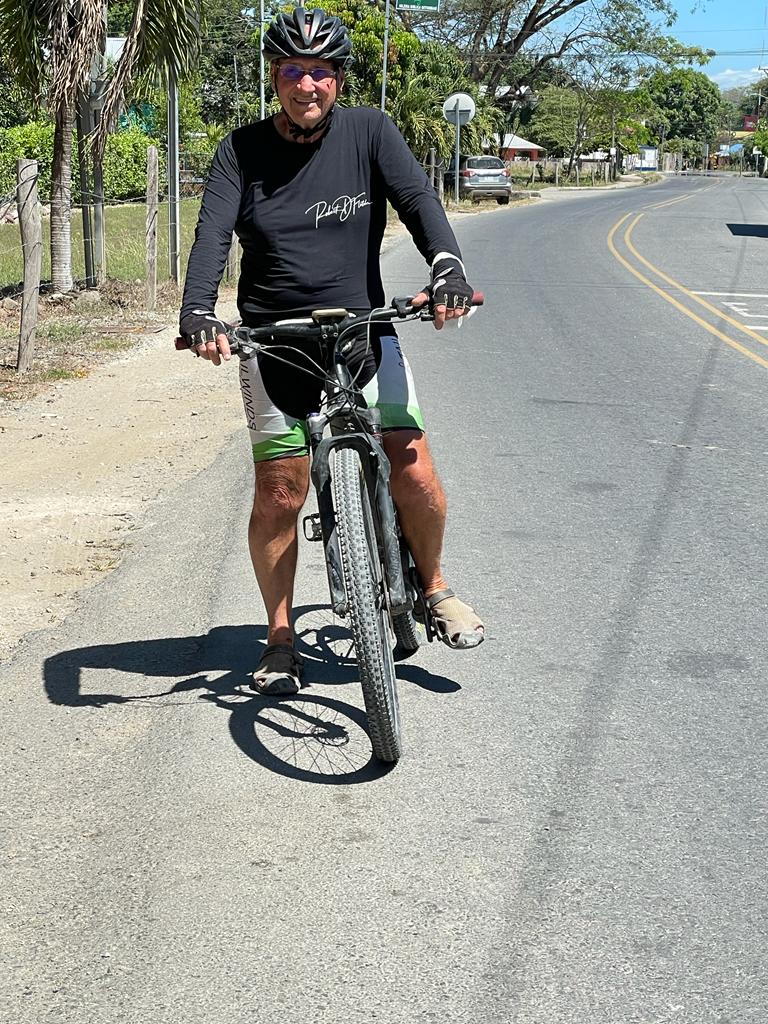During yesterday’s training ride, I thought about battery life, charging, and riding.
The ride was 101 km with 285 m of climbing with the last 1/2 under the hot sun and a road temperature in the mid-thirties. At 72 km, I had had it and needed to stop for a rest and some energy drinks. I had a bar and water at 25 and 50 km, but I needed a 20 min rest at 72.

I did continue and reached home at 101k and one bar out of five and 28 k of range remaining.
Everyone also knows that batteries do not drain linearly.
My first bar disappeared at 38.5 k, the second at 65 k, the third at 83 k, and the fourth at 100 k. So I got 38.5, 26.5, 17, and 18 for the disappearance of a bar on my controller.
Many articles are published about what affects the distance an ebike can go on one battery. Everyone knows that wind, hills, road surface, weight, and how must assist you are asking the battery for help determines how long the battery can assist the motor.
There are very few articles about the fitness of the rider. There is no doubt that a fit rider can travel a longer distance on the same bike as a lesser fit rider.

For example, my bike has a 500 w power package and a 250 w mid-drive motor. In theory, my battery should be able to supply electricity to my motor for two hours with no assistance from me by way of pedaling or changing gears and running on the complete assistance. If I start to pedal and I contribute 125 watts, then my battery only has to supply 125 watts, so in theory, it can now last four hours rather than two. Yes, I forget about resistance.
If my younger, fitter, more muscular friend Wayne rides my bike, he can put out 250 watts by himself. So, in theory, once the cycle has enough momentum, Wayne could depend on the battery all day if he was never tired and was always on smooth, flat roads.
Since roads tend to have hills and climbing hills often results in the motor reaching its peak capacity, it uses more of the battery. My battery is rated at 250 watts continuously and 500 watts peak capacity. When operating at peak capacity, I am using more power, and thus my range is going to be a lot less.
My battery gives me 90 km with 800 m of climbing or 120 km with 300 m of climbing. I have these numbers in my mind when I choose my ride for the day. The route you choose goes a long way in determining your battery range.
The fitness factor also affects how fast the battery drains. My numbers reported above show a big difference for each bar that disappears from the controller. Not all of this is caused by the non-linear effect. A good portion of the drain was due to my fitness. As I tired, I was not keeping up with my contribution to the power supply; thus, the battery had to work harder. Hence less distance for each bar.

I also noted that after my rest, I managed to keep my battery drain constant.
These numbers might improve if I had stopped 1/2 way for my rest.
These results would be very different for a hub drive.
Now permit me to talk about charging and voltage drop.
When I first got this ebike, I depleted the battery and charged it while setting my alarm for 30 minutes so I could check the charging progress. After 30 minutes, the range showed 24 k. Over the next 1/2 hour, the range increase by 12 k each 1/2 hour. After 2 hours, the range indicated 60 k.
That demonstrated how much I could expect if I needed to charge during the day when on tour.
Last observation about batteries. On two of my ebikes, my controller had a screen that indicated the number of volts remaining. A 36 v battery was full at 42 v and did not have enough power to operate the motor at 32 V. On that bike, I had a 350 w hub motor and ten ah. The battery still had power but not enough to operate the engine, but the lights were operating. I knew I could get 60 k on a battery, so a one-volt drop was 6 km. The voltage meter was a good indicator of how much further I could travel on the battery.

On my 48 v battery 14 ah, 500 w motor, it shows full at 52 v. and stops powering the motor at 35 v remaining.
Batteries are not dead when your controller says empty; they do not have sufficient power to drive the motor.
Again the fitter the rider and the more you pedal, the longer the distance you can ride on the battery.

Hi Bob, That’s pretty nerdy stuff but also very interesting. How many batteries will you be taking with you on this trip? Also how many e-bikes (incase one gets pooched)?
Cheers,
Mike
Robert, remind me what kind of power system your EBike has. I’ve got a Bosch system with a Nyon controller, and fortunately for me, I have dual batteries. I can go without a charge for 200 miles under optimal conditions, but maybe only 75 continually uphill against a head wind. You have to plan a lot more carefully than I do to make your target distances between charges. Can you possibly expand your battery power?